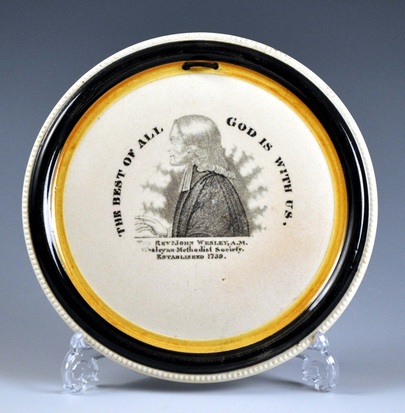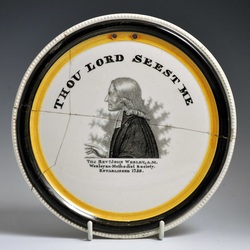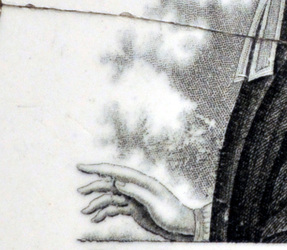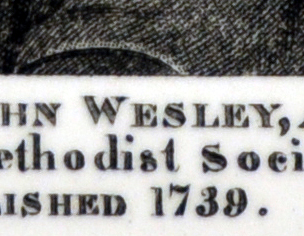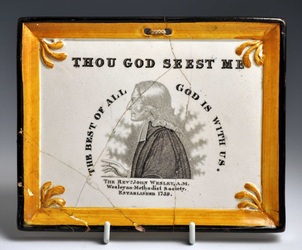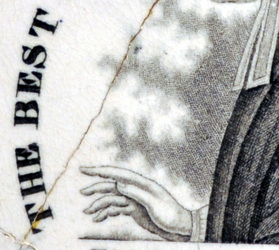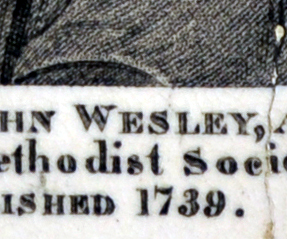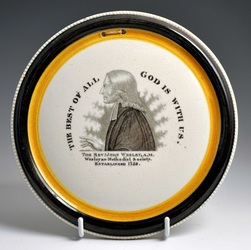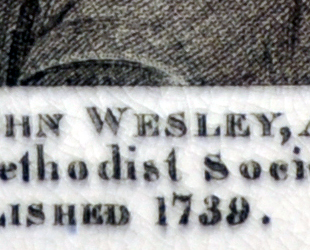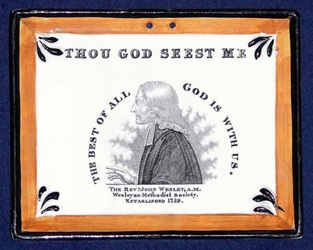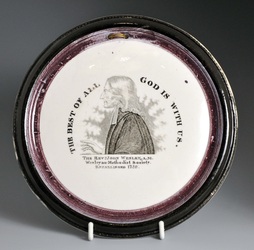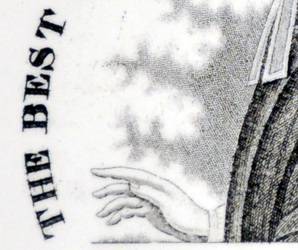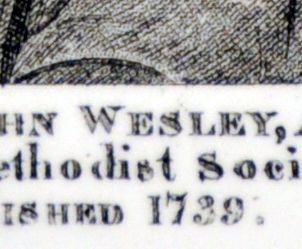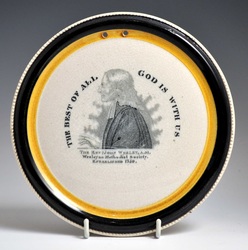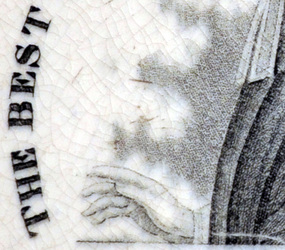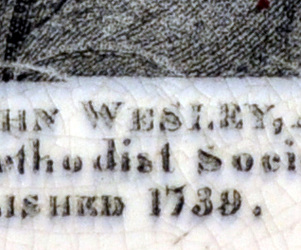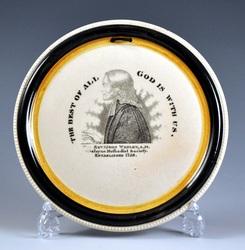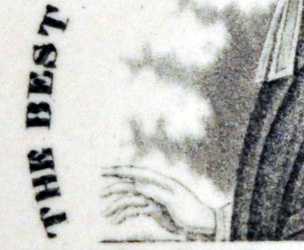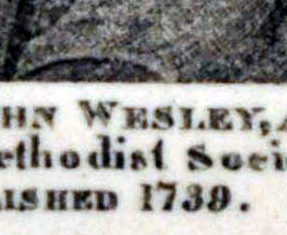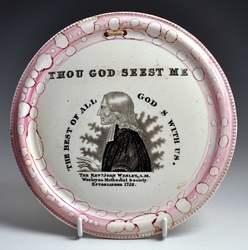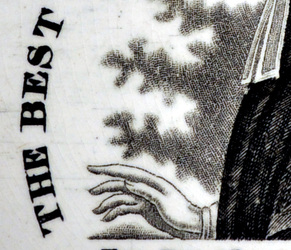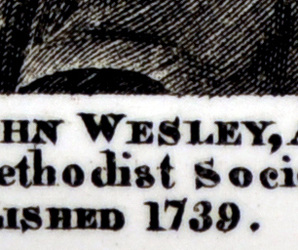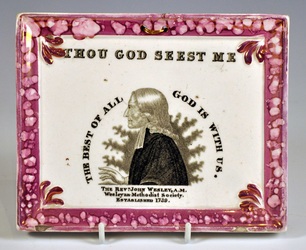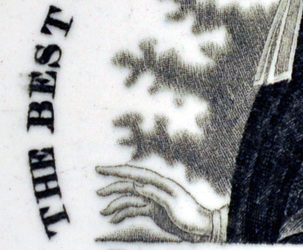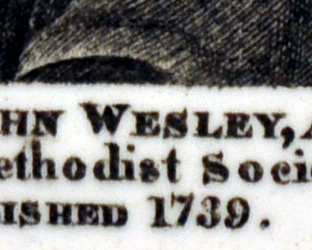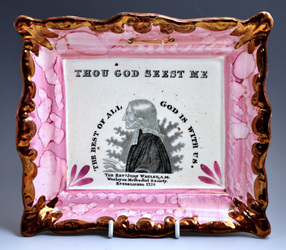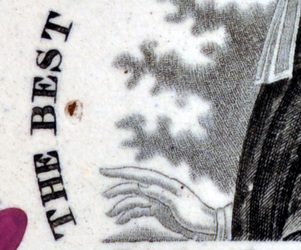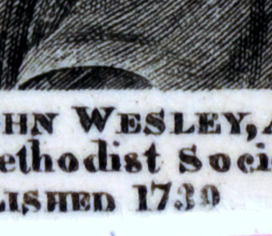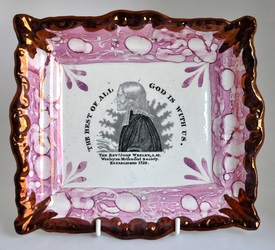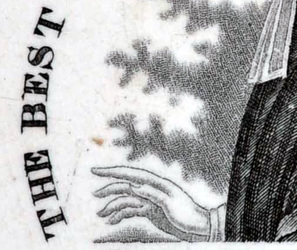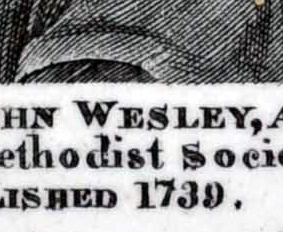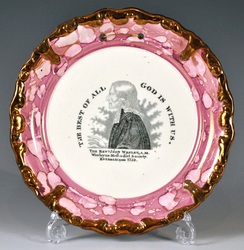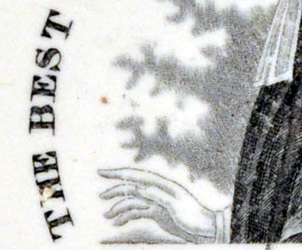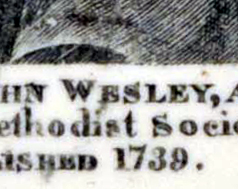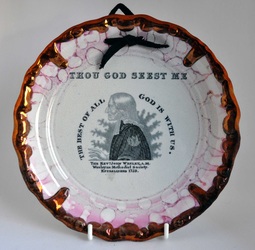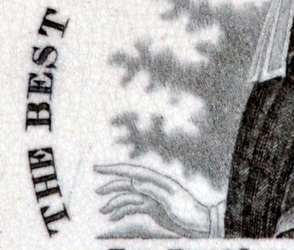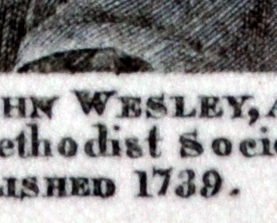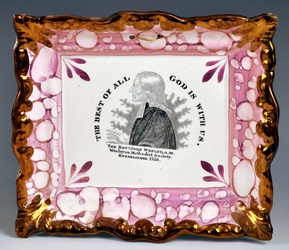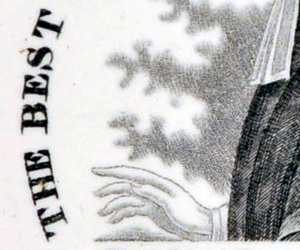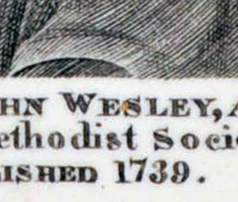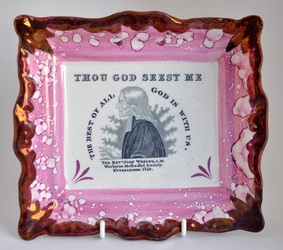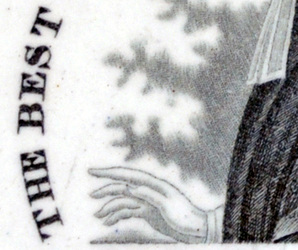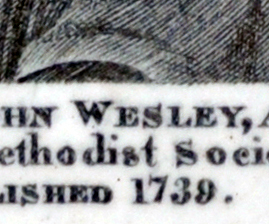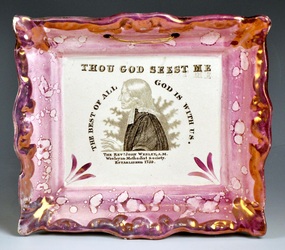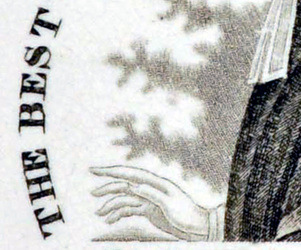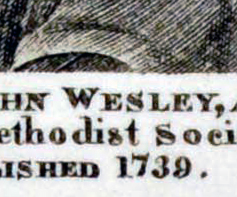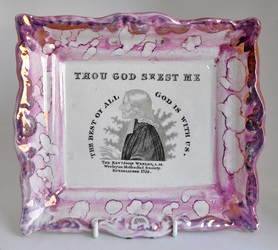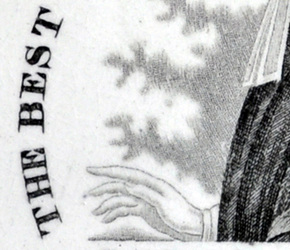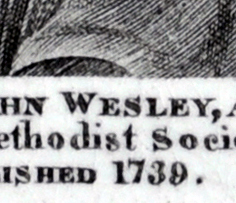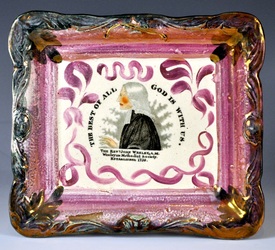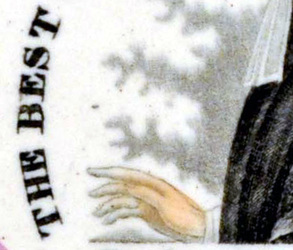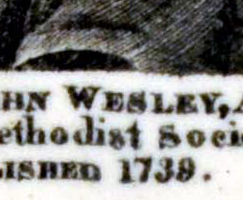|
7/27/2013 0 Comments Garrison Wesley transferAs plaques go, the one below is pretty undistinguished. Circular black and yellow plaques are usually more desirable than their pink counterparts, but plaques like the Wesley below are so commonplace, they must have been made in their many hundreds (perhaps thousands). Over time, the etched grooves in the transfer plate wore shallow, and on this plaque, Wesley has lost his nose. This Wesley transfer is associated with the Garrison Pottery - Dixon & Partners. (Note the 6 'prongs' of the 'aura' to Wesley's right. Transfers from other potteries have fewer prongs. Read more here.) The black and yellow plaques were likely first made by the Dixon, Austin & Co partnership in the 1830s. The first plaque below doesn't have the banner 'The Best of all God is with us'. That could be because the plaque is very early and the banner was engraved on the transfer plate after the plaque was made (see the Dixon, Austin & Co page for a similar soup plate without the banner). Or it could be because the banner was trimmed off before the transfer tissue was applied to the plaque. I had the thought that if we compared lots of plaques with this transfer, we might be able to get an idea of the age of the worn plaque above. For instance, if there were pink plaques with the 'Dixon Co' impress and Wesleys with missing noses, it might imply that production of the black and yellow plaques continued into the 1850s or even into the 1860s. But that's not what I found. All the plaques below could come from the same transfer plate. Look at the spacing of the letters in the second detail. In particular the space around the letter 'o' in 'Methodist' and 'Society'. That is consistent through all the transfers below. The contrast of the details has been turned up in PhotoShop, so it is the first image that best shows the relative strengths of the transfers. I have ordered them from strong to weak as best I can. This was the point at which things became surprising. The plaques with pink lustre, which we know were produced later, have stronger transfers than those above. There are two possible explanations for this. Firstly, that they came from a different transfer plate (although the spacing of the lettering remains identical). Secondly, that the transfer plate was re-engraved to restore clarity. As you'd expect the pink plaques with the 'Dixon, Phillips & Co' impress generally have stronger transfers than those with the later 'Dixon Co' mark. The hatching on Wesley's sleeve (second detail) on the pink plaques is identical. There are a couple of white diagonals that appear in the same place on every sleeve. Wesley's aura is also more pronounced on the pink plaques. I think all of that is consistent with re-engraving a transfer plate that had seen heavy use in the 1830s. By the 1840s, black and yellow plaques had fallen out of fashion, and pink lustre was all the rage. (I have noted this phenomenon with plaques attributed to Sheriff Hill also.) Interestingly, this would mean that the pink rectangular Wesleys and Clarkes could not have been made as early as 1832 to commemorate Clarke's death. Finally, here's the last incarnation of this transfer on a plaque attributed to John Carr. The transfer plate likely moved to North Shields when the Garrison Pottery closed in 1865. Carr appears to have had the plate re-engraved again to restore the black.
The interesting find for me is that there appears to have been no overlap between the production of black & yellow and pink lustre plaques. For this transfer at least.
0 Comments
Leave a Reply. |
AuthorStephen Smith lives in London, and is always happy to hear from other collectors. If you have an interesting collection of plaques, and are based in the UK, he will photograph them for you. Free advice given regarding selling and dispersal of a collection, or to those wishing to start one. Just get in touch... Archives
February 2022
AcknowledgementsThis website is indebted to collectors, dealers and enthusiasts who have shared their knowledge or photos. In particular: Ian Holmes, Stephen Duckworth, Dick Henrywood, Norman Lowe, Keith Lovell, Donald H Ryan, Harold Crowder, Jack and Joyce Cockerill, Myrna Schkolne, Elinor Penna, Ian Sharp, Shauna Gregg at the Sunderland Museum, Keith Bell, Martyn Edgell, and Liz Denton.
|
